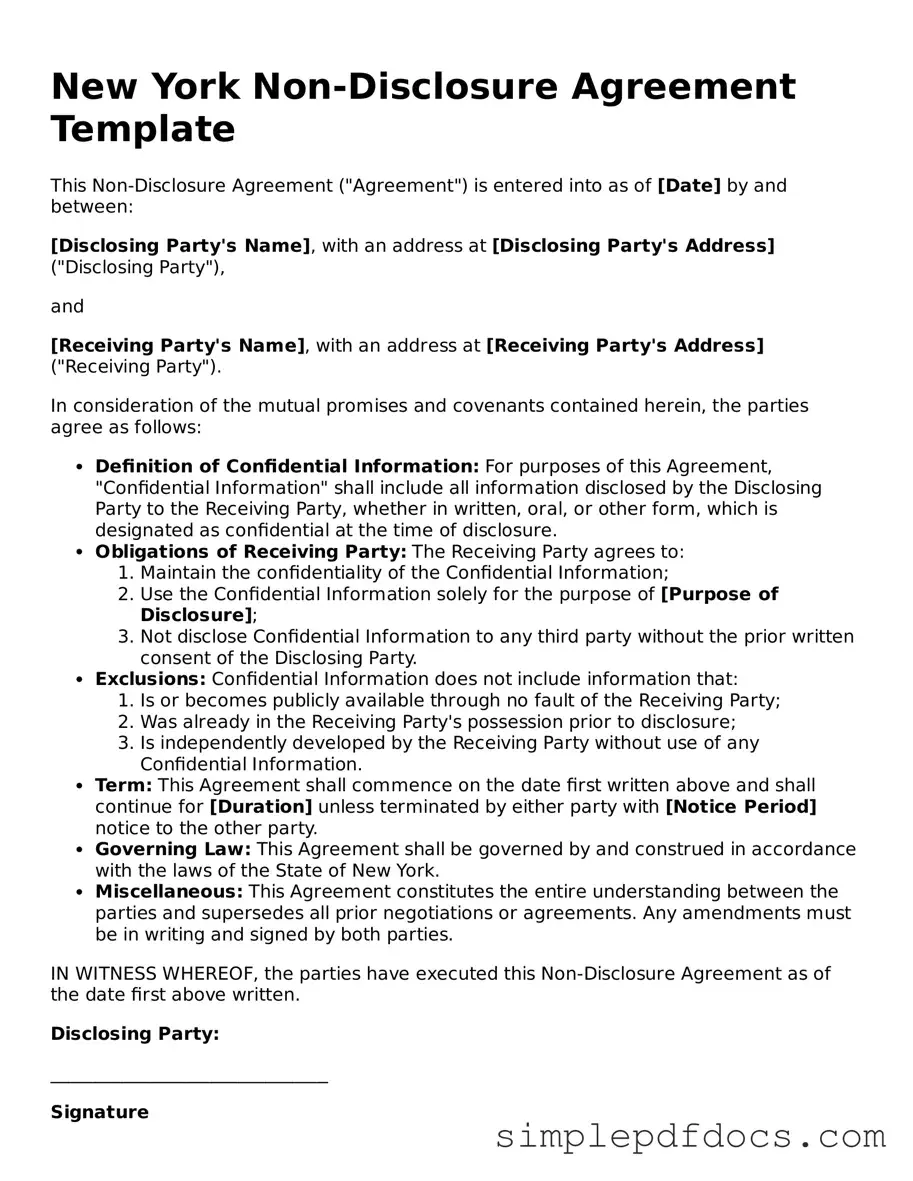In the bustling world of business, protecting sensitive information is paramount, and the New York Non-disclosure Agreement (NDA) form serves as a vital tool in achieving this goal. This legally binding document is designed to safeguard confidential information shared between parties, ensuring that trade secrets, proprietary data, and other sensitive materials remain secure. The NDA outlines the obligations of both parties, specifying what information is considered confidential and detailing the circumstances under which it can be disclosed. It is crucial for businesses, entrepreneurs, and individuals to understand the key components of the NDA, including the duration of confidentiality, permissible disclosures, and the consequences of breaching the agreement. By utilizing this form, parties can foster trust and collaboration while minimizing the risk of information leaks that could jeopardize their competitive edge. Given the complexities of today’s business environment, having a well-drafted NDA in place is not just a precaution; it is a necessity for anyone looking to protect their intellectual property and maintain a competitive advantage.
